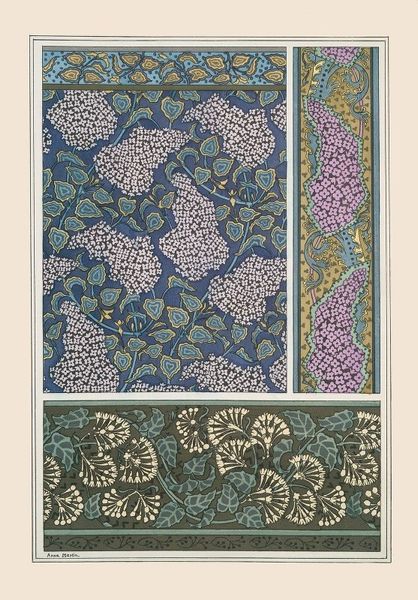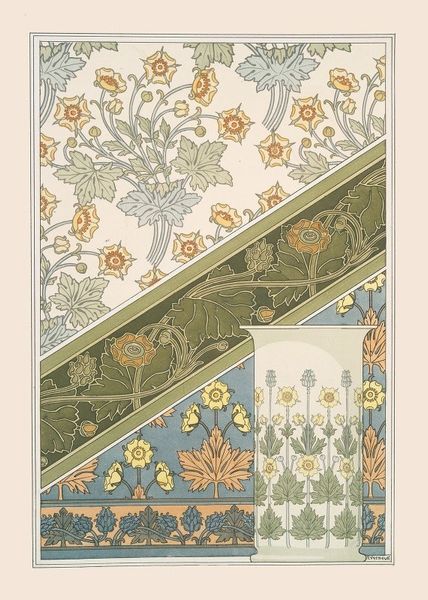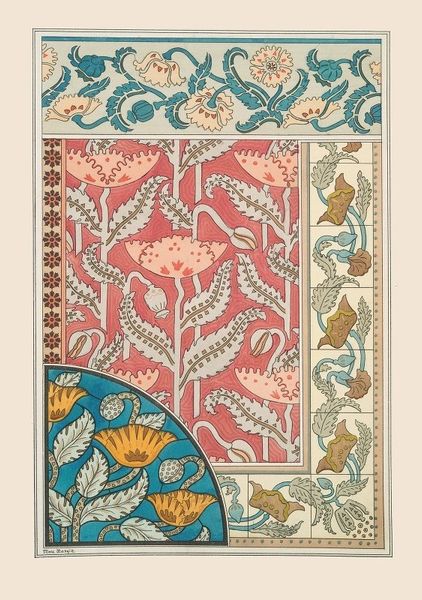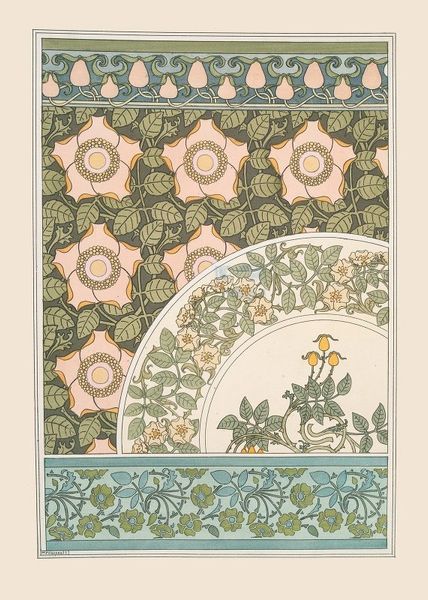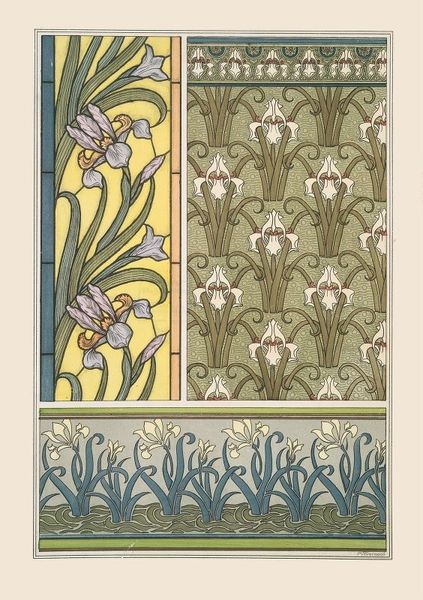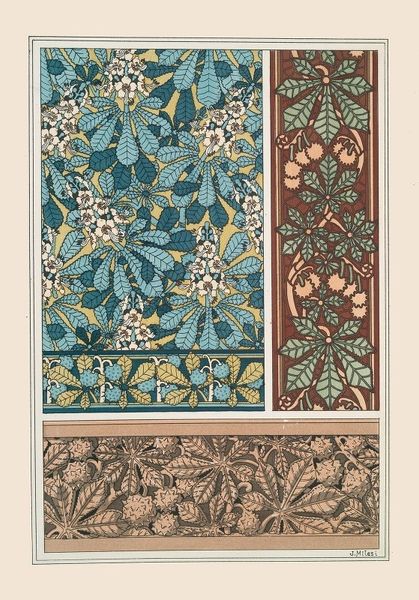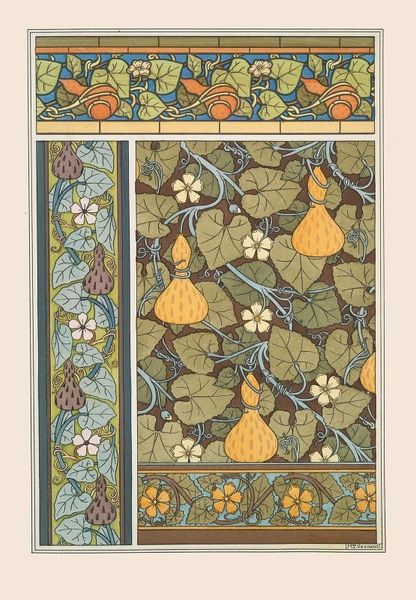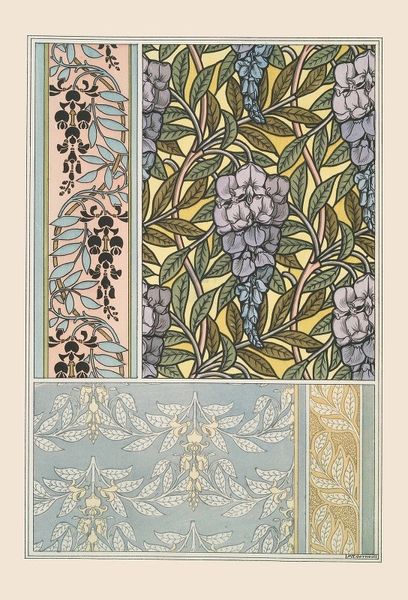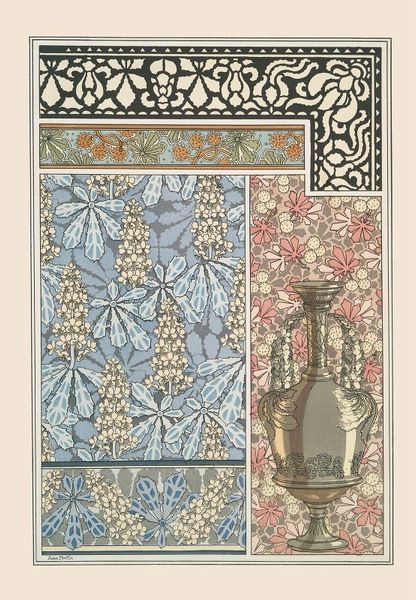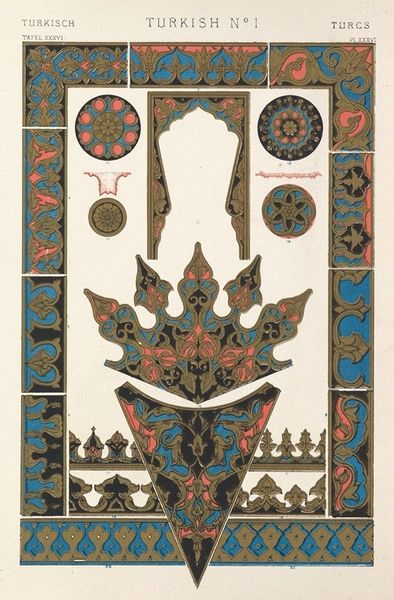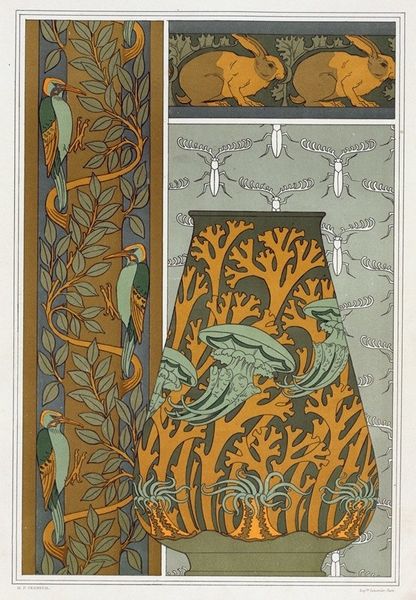
graphic-art, lithograph, print
#
graphic-art
#
art-nouveau
#
lithograph
# print
#
decorative-art
Copyright: Public Domain: Artvee
Editor: This is "Sagittaire 2" by Maurice Pillard Verneuil, a print created in 1896. It has an intriguing layout, a visual sampler of designs. I’m curious – how does this particular piece fit into the broader context of Art Nouveau and its aims? Curator: Well, Art Nouveau sought to break from academic art by embracing decorative arts, aiming to make art a part of everyday life, and that's evident here. It challenged the hierarchy that privileged painting and sculpture. This print exemplifies the movement's ambition to integrate art into functional design. Notice the different treatments of botanical forms. The intention isn't necessarily scientific accuracy, but adaptation for various surfaces. Editor: It's almost like a mood board for interior design of the time. But what role did prints like this play in making art more accessible? Curator: Exactly! These prints facilitated mass production and distribution, lowering costs and introducing modern design to wider audiences. This democratized aesthetics in a way previously unimaginable, especially when championed by venues such as department stores that embraced the aesthetic in advertisements and interior design to promote commerce. It shifted art's perceived function. Instead of high art being reserved for the wealthy elite in galleries and museums, this design becomes something democratic to be enjoyed. It brought beauty to wallpaper and textiles and all manner of products. Do you see that reflected in any specific element of this print? Editor: I suppose the repetition and the clear patterns are key to that reproducibility and the visual appeal it creates in a pattern for functional things. This print seems less about individual artistic expression and more about serving a function. Curator: Precisely. And it calls into question traditional notions of artistic authorship, making design itself the prominent voice. It serves the cultural demand for a modern aesthetic, adapted across mediums. Editor: That really reshapes my understanding of the purpose of art. I was so caught up in the high art context, but this shows its social function. Curator: It certainly does, a reflection on how art history continuously influences social trends, then and now.
Comments
No comments
Be the first to comment and join the conversation on the ultimate creative platform.


